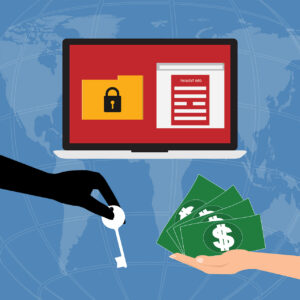Spam emails can be a nuisance and, more importantly, a security risk. They clutter your inbox, waste your time, and expose you to phishing attacks, malware, and identity theft. While spam filters help to catch many of these unwanted messages, some still slip through. As email users, it’s essential to adopt proactive measures to avoid spam emails. This article provides simple yet effective tips to help you keep your inbox spam-free.
Understanding Spam Emails
Spam emails, or junk mail, are unsolicited messages sent to large groups of people, often to promote products, scams, or malicious content. These emails are not just a minor inconvenience; they can also put your personal and professional information at risk. **Cybercriminals use spam as a gateway to phishing attacks, where they attempt to steal sensitive information like passwords and credit card details.
Why Avoiding Spam is Important
Many spam emails contain harmful links or attachments that, when clicked, can install malware on your device. This could lead to data breaches, financial loss, or even identity theft. Avoiding spam emails protects your inbox and shields your personal and financial information from hackers.
RELATED: Enhancing Email Security with Advanced Anti-Spam and Filtering
Top Tips to Avoid Spam Emails
1. Use a Reliable Email Filtering Service
The first line of defense against spam is a reliable email filtering service. MailSafi offers advanced filtering features that can catch and block spam before it reaches your inbox. These filters use cutting-edge algorithms to identify and quarantine suspicious emails. Regularly updating your email filtering software protects you from the latest spam tactics.
2. Avoid Sharing Your Email Publicly
One of the most common ways spammers obtain your email address is by scraping it from public websites and forums. To avoid being targeted, be cautious about where you share your email address. If you need to post your email online, consider using alternatives like creating a separate email address for public use or using a web form to hide your email from spambots.
3. Be Cautious with Subscriptions and Newsletters
Many legitimate websites ask you to sign up for newsletters or promotions, but some can lead to unwanted emails. When signing up for online services, read the privacy policies to understand how your email address will be used. Additionally, consider using a temporary or throwaway email address for one-time sign-ups.
4. Do Not Click on Unsubscribe Links in Spam Emails
Clicking the unsubscribe link in a spam email may seem like a good idea, but it can confirm to the sender that your email address is active. Instead of unsubscribing from suspicious emails, mark them as spam using your email provider’s built-in tools. This helps train your email filters to recognize similar messages as junk in the future.
5. Use a Secondary Email Address for Online Purchases
Whenever you make online purchases or sign up for services, use a secondary email address dedicated to these transactions. This keeps your primary inbox free from clutter and spam. If this secondary email becomes overrun with spam, abandoning or switching without affecting your main account is more accessible.
6. Avoid Responding to Unknown Senders
Responding to spam emails can further compromise your security. Spammers often track responses to validate email addresses, increasing the likelihood of receiving even more spam. If you receive an email from an unknown sender, avoid opening it and never respond.
7. Regularly Update Your Email Password
Another simple but effective way to avoid spam is to update your email password regularly. Strong passwords that combine letters, numbers, and special characters make accessing your email account more difficult for cybercriminals. For even more robust protection, enable two-factor authentication (2FA), adding an extra security layer.
8. Use Anti-Spam Software
Investing in anti-spam software can significantly reduce the number of unwanted emails you receive. Programs like MailSafi provide additional layers of protection by automatically filtering out suspicious content before it reaches your inbox. Many anti-spam tools also offer the ability to customize settings based on your preferences.
9. Be Mindful of Phishing Scams
Phishing scams are one of the most dangerous types of spam emails. These emails often impersonate legitimate organizations and attempt to trick you into providing personal information. Always double-check the sender’s email address, and be wary of urgent requests for sensitive data. MailSafi’s advanced filtering systems can help identify phishing emails and protect your inbox from these threats.
10. Check the Email Headers for Suspicious Information
When you receive an email from an unfamiliar sender, checking the email headers for additional information is a good practice. The headers reveal essential details like the sender’s IP address and email path, which can help determine if the email is legitimate. Suspicious headers may indicate that the email is a form of spam or phishing.
11. Report Spam Emails
If spam emails slip through your filters, take the time to report them. Most email services provide options to flag or report suspicious messages. Reporting spam helps improve filtering systems and reduces the likelihood of similar messages reaching other users.
12. Stay Informed About Spam Trends
Spammers are constantly evolving their tactics to bypass filters and trick users. Staying informed about the latest trends in spam and phishing can help you identify and avoid new threats. Keep an eye out for cybersecurity updates and best practices to ensure you use the most effective methods to protect your inbox.
Read also: Future Trends in Email Security and Collaboration: What’s Next?
The Role of MailSafi in Blocking Spam Emails
MailSafi offers comprehensive email security solutions, including robust spam filtering and anti-phishing features. Integrating with your email provider, MailSafi, helps ensure that only legitimate emails reach your inbox. Their advanced filtering algorithms adapt to emerging threats, making them a reliable partner in the fight against spam. In addition to spam protection, MailSafi provides services like email archiving and encryption, offering an all-in-one solution for businesses and individuals.
Conclusion
Avoiding spam emails is essential to protecting your inbox and personal data from malicious threats. Following the simple tips outlined above, you can minimize the risk of falling victim to spam and phishing attacks. Combining these strategies with a trusted email security service like MailSafi ensures your inbox remains secure and clutter-free.
![]()




